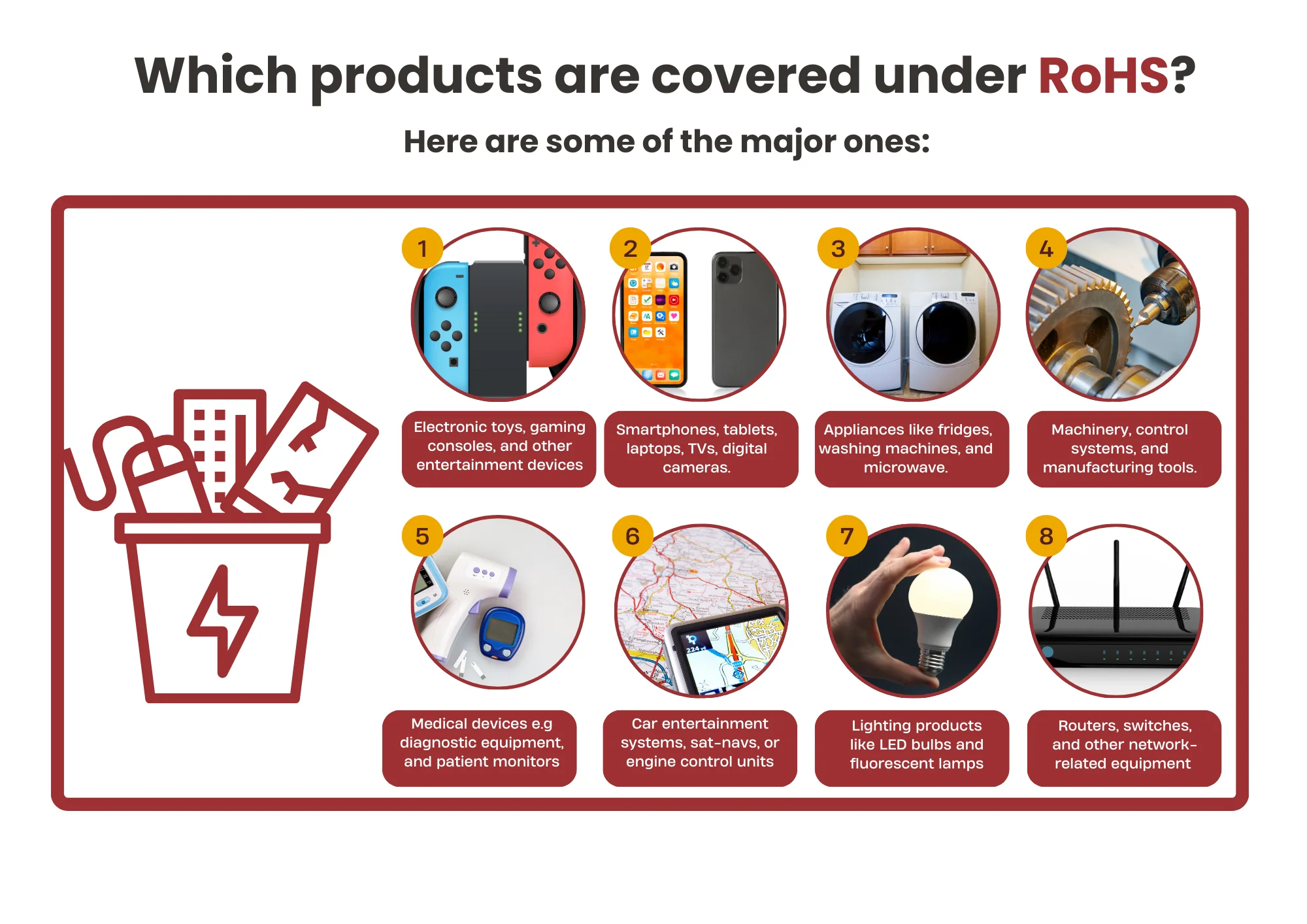
PAHs Testing (Food and Textile)
On July 1, 2015, the new standard for polycyclic aromatic hydrocarbons (PAHs) control in GS-certified products, AfPS GS 2014:01 PAK, officially took effect, while the previous standard ZEK 01.4-08 expired on June 30. Products that require gs certification, such as electronics, toys, food packaging materials, plastic products, rubber products, and machinery, must comply with the new PAHs testing requirements.
PAHs (Polycyclic Aromatic Hydrocarbons)
PAHs (Polycyclic Aromatic Hydrocarbons) are chemical compounds made up of two to seven benzene rings arranged in linear, angular, or cluster structures. These compounds are mainly produced due to incomplete combustion of carbon-containing substances or during the use of petrochemical fuels. Some PAHs are highly carcinogenic and may also pose risks such as teratogenicity (ability to cause birth defects) and mutagenicity (ability to cause genetic mutations). There are over 100 known types of PAHs, with 18 common ones listed in the German standard.

Industries Involved
- Electronics and Electrical Appliances
- Toys, Stationery, and Children's Products
- Textiles, Footwear, and Luggage
- Food Contact Materials
- Environmental Protection
Materials and Products that May Contain PAHs:
- Natural Sources: Charcoal, crude oil, wood distillates, natural tar
- Man-Made Sources: Pharmaceuticals, dyes, plastics, rubber, pesticides, lubricating oils, release agents, electrolytes in capacitors, mineral oils, tar
- Other Sources: Insecticides, fungicides, mosquito coils, tobacco smoke, gasoline anti-coagulants
Products that may contain PAHs:
- Plastic handles
- Plastic packaging boxes
- Rubber handles
- Odorous plastic and rubber products
- Plastic and rubber components in electronics and electrical appliances
Regulatory Standards
Several countries and regions have established written or legislative PAHs regulations, including:
- Germany GS Certification, LFGB
- European Union REACH Regulation
- U.S. EPA
- China GB, GB/T, GHZB
- OEKO-TEX® Standard 100
Common PAHs Testing Items
1. Benzo[a]pyrene (BaP)
CAS No: 50-32-8
Regulatory Requirements: GS MARK, REACH Annex XVII, US EPA, OEKO-TEX® Standard 100
2. Benzo[e]pyrene (BeP)
CAS No: 192-97-2
Regulatory Requirements: GS MARK, REACH Annex XVII, OEKO-TEX® Standard 100
3. Benzo[a]anthracene (BaA)
CAS No: 56-55-3
Regulatory Requirements: GS MARK, REACH Annex XVII, US EPA, OEKO-TEX® Standard 100
4. Chrysene (CHR)
CAS No: 218-01-9
Regulatory Requirements: GS MARK, REACH Annex XVII, US EPA, OEKO-TEX® Standard 100
5. Benzo[b]fluoranthene (BbFA)
CAS No: 205-99-2
Regulatory Requirements: GS MARK, REACH Annex XVII, US EPA, OEKO-TEX® Standard 100
6. Benzo[j]fluoranthene (BjFA)
CAS No: 205-82-3
Regulatory Requirements: GS MARK, REACH Annex XVII, OEKO-TEX® Standard 100
7. Benzo[k]fluoranthene (BkFA)
CAS No: 207-08-9
Regulatory Requirements: GS MARK, REACH Annex XVII, US EPA, OEKO-TEX® Standard 100
8. Dibenzo[a,h]anthracene (DBAhA)
CAS No: 53-70-3
Regulatory Requirements: GS MARK, REACH Annex XVII, US EPA, OEKO-TEX® Standard 100
9. Naphthalene (Nap)
CAS No: 91-20-3
Regulatory Requirements: GS MARK, US EPA, OEKO-TEX® Standard 100
10. Indeno[l,2,3-cd]pyrene (IND)
CAS No: 193-39-5
Regulatory Requirements: GS MARK, US EPA, OEKO-TEX® Standard 100
11. Acenaphthylene (AcPy)
CAS No: 208-96-8
Regulatory Requirements: GS MARK, US EPA, OEKO-TEX® Standard 100
12. Acenaphthene (Acp)
CAS No: 83-32-9
Regulatory Requirements: GS MARK, US EPA, OEKO-TEX® Standard 100
13. Fluorene (Flu)
CAS No: 86-73-7
Regulatory Requirements: GS MARK, US EPA, OEKO-TEX® Standard 100
14. Phenanthrene (PA)
CAS No: 85-1-8
Regulatory Requirements: GS MARK, US EPA, OEKO-TEX® Standard 100
15. Pyrene (Pyr)
CAS No: 129-00-0
Regulatory Requirements: GS MARK, US EPA, OEKO-TEX® Standard 100
16. Anthracene (Ant)
CAS No: 120-12-7
Regulatory Requirements: GS MARK, US EPA, OEKO-TEX® Standard 100
17. Fluoranthene (FL)
CAS No: 206-44-0
Regulatory Requirements: GS MARK, US EPA, OEKO-TEX® Standard 100
18. Benzo[g,h,i]perylene (BghiP)
CAS No: 191-24-2
Regulatory Requirements: GS MARK, US EPA, OEKO-TEX® Standard 100
19. Cyclopenta[c,d]pyrene
CAS No: 27208-37-3
Regulatory Requirements: OEKO-TEX® Standard 100
20. Dibenzo[a,e]pyrene
CAS No: 192-65-4
Regulatory Requirements: OEKO-TEX® Standard 100
21. Dibenzo[a,h]pyrene
CAS No: 189-64-0
Regulatory Requirements: OEKO-TEX® Standard 100
22. Dibenzo[a,i]pyrene
CAS No: 189-55-9
Regulatory Requirements: OEKO-TEX® Standard 100
23. Dibenzo[a,l]pyrene
CAS No: 191-30-0
Regulatory Requirements: OEKO-TEX® Standard 100
24. 1-Methylpyrene
CAS No: 2381-21-7
Regulatory Requirements: OEKO-TEX® Standard 100
German Standard PAHs
The German Consumer Goods Safety Committee (Ausschuss für Produktsicherheit, AfPS) issued a new standard, AfPS GS 2019:01 PAK, which updates the PAHs testing requirements. This new standard became effective on July 1, 2020, while the previous standard, AfPS GS 2014:01 PAK, expired on June 30, 2020.
Major Updates:
1. Updated Testing Items: The following PAH compounds were removed: Acenaphthene (CAS No. 83-32-9), Acenaphthylene (CAS No. 208-96-8), and Fluorene (CAS No. 86-73-7). The total number of testing items was reduced from 18 to 15.
2. Category Content Update:
- Category 1:
- AfPS GS 2014:01 PAK: Materials intended to be placed in the mouth or those that have long-term contact with the skin (over 30 seconds).
- AfPS GS 2019:01 PAK: Materials intended to be placed in the mouth, materials within the scope of Directive 2009/48/EC, and materials intended for long-term skin contact (over 30 seconds) for children aged 3 years and below.
- Category 2:
- AfPS GS 2014:01 PAK: Materials not included in Category 1 but expected to have long-term skin contact (over 30 seconds) or repeated short-term skin contact.
- AfPS GS 2019:01 PAK: Materials not included in Category 1 but expected to have long-term skin contact (over 30 seconds) or repeated short-term skin contact.
- a) Children’s products
- b) Other consumer goods
- Category 3:
- AfPS GS 2014:01 PAK: Materials not included in Categories 1 and 2, expected to have short-term skin contact (no more than 30 seconds).
- AfPS GS 2019:01 PAK: Materials not included in Categories 1 and 2, expected to have short-term skin contact (no more than 30 seconds).
- a) Children’s products
- b) Other consumer goods
3. New PAHs Limit Requirements:
- Benzo[a]pyrene (mg/kg):
- Category 1: < 0.2
- Category 2: < 0.2
- Category 3: < 0.5 for children’s products, < 0.5 for other consumer goods, < 1 for all products
- Benzo[e]pyrene (mg/kg):
- Category 1: < 0.2
- Category 2: < 0.2
- Category 3: < 0.5 for children’s products, < 0.5 for other consumer goods, < 1 for all products
- Benzo[a]anthracene (mg/kg):
- Category 1: < 0.2
- Category 2: < 0.2
- Category 3: < 0.5 for children’s products, < 0.5 for other consumer goods, < 1 for all products
- Benzo[b]fluoranthene (mg/kg):
- Category 1: < 0.2
- Category 2: < 0.2
- Category 3: < 0.5 for children’s products, < 0.5 for other consumer goods, < 1 for all products
- Benzo[j]fluoranthene (mg/kg):
- Category 1: < 0.2
- Category 2: < 0.2
- Category 3: < 0.5 for children’s products, < 0.5 for other consumer goods, < 1 for all products
- Benzo[k]fluoranthene (mg/kg):
- Category 1: < 0.2
- Category 2: < 0.2
- Category 3: < 0.5 for children’s products, < 0.5 for other consumer goods, < 1 for all products
- Chrysene (mg/kg):
- Category 1: < 0.2
- Category 2: < 0.2
- Category 3: < 0.5 for children’s products, < 0.5 for other consumer goods, < 1 for all products
- Dibenzo[a,h]anthracene (mg/kg):
- Category 1: < 0.2
- Category 2: < 0.2
- Category 3: < 0.5 for children’s products, < 0.5 for other consumer goods, < 1 for all products
- Benzo[ghi]perylene (mg/kg):
- Category 1: < 0.2
- Category 2: < 0.2
- Category 3: < 0.5 for children’s products, < 0.5 for other consumer goods, < 1 for all products
- Indeno[1,2,3-cd]pyrene (mg/kg):
- Category 1: < 0.2
- Category 2: < 0.2
- Category 3: < 0.5 for children’s products, < 0.5 for other consumer goods, < 1 for all products
- Phenanthrene, Pyrene, Anthracene, Fluoranthene (mg/kg):
- Total:
- Category 1: < 1
- Category 2: < 5
- Category 3: < 10
- Category 4: < 20
- Category 5: < 50
- Naphthalene (mg/kg):
- Category 1: < 1
- Category 2: < 2
- Category 3: < 10
- Total of 15 PAHs (mg/kg):
- Category 1: < 1
- Category 2: < 5
- Category 3: < 10
- Category 4: < 20
- Category 5: < 50
PAHs and REACH Requirements
1. Benzo[a]pyrene (BaP)
- CAS No.: 50-32-8
- REACH Requirement: < 1mg/kg
2. Benzo[e]pyrene (BeP)
- CAS No.: 192-97-2
- REACH Requirement: The total of 8 PAHs should not exceed 10mg/kg
3. Benzo[a]anthracene (BaA)
- CAS No.: 56-55-3
- REACH Requirement: Not specified
4. Chrysene (CHR)
- CAS No.: 218-01-9
- REACH Requirement: Not specified
5. Benzo[b]fluoranthene (BbFA)
- CAS No.: 205-99-2
- REACH Requirement: Not specified
6. Benzo[k]fluoranthene (BkFA)
- CAS No.: 207-08-9
- REACH Requirement: Not specified
7. Benzo[j]fluoranthene (BjFA)
- CAS No.: 205-82-3
- REACH Requirement: Not specified
8. Dibenzo[a,h]anthracene (DBAhA)
- CAS No.: 53-70-3
- REACH Requirement: PCA (Polycyclic Aromatic Hydrocarbons) content should not exceed 3% when tested using the IP 346 method. From September 23, 2016, the new testing method EN 16143:2013 will replace the existing IP 346 method.
- Tire and tire components should meet the requirements of the ISO 21461 method, where the Bay Proton (Bay Proton) content should not exceed 0.35%.
- The PAHs-related industries regulated by the EU include the automotive and tire rubber industries, where carbon black, rubber film, reclaimed rubber, and rubber oil in tires are at significant risk.
- Note: The EU REACH regulation on tire and rubber filling oils, as well as retreaded tires, has been enforced since January 1, 2010.
OEKO-TEX® Standard 100
OEKO-TEX® Standard 100 regulates the limits for 24 polycyclic aromatic hydrocarbons (PAHs) in textiles and leather products:
1. Benzo[a]pyrene (BaP)
- CAS No.: 50-32-8
- I - Infant Products (under 36 months, excluding leather products): 0.5
- II - Direct Contact with Skin: 1.0
- III - Not Directly in Contact with Skin (only small parts may contact skin): 1.0
- IV - Decorative Materials: 1.0
2. Benzo[e]pyrene (BeP)
- CAS No.: 192-97-2
- I - Infant Products (under 36 months, excluding leather products): 0.5
- II - Direct Contact with Skin: 1.0
- III - Not Directly in Contact with Skin (only small parts may contact skin): 1.0
- IV - Decorative Materials: 1.0
3. Benzo[a]anthracene (BaA)
- CAS No.: 56-55-3
- I - Infant Products (under 36 months, excluding leather products): 0.5
- II - Direct Contact with Skin: 1.0
- III - Not Directly in Contact with Skin (only small parts may contact skin): 1.0
- IV - Decorative Materials: 1.0
4. Chrysene (CHR)
- CAS No.: 218-01-9
- I - Infant Products (under 36 months, excluding leather products): 0.5
- II - Direct Contact with Skin: 1.0
- III - Not Directly in Contact with Skin (only small parts may contact skin): 1.0
- IV - Decorative Materials: 1.0
5. Benzo[b]fluoranthene (BbFA)
- CAS No.: 205-99-2
- I - Infant Products (under 36 months, excluding leather products): 0.5
- II - Direct Contact with Skin: 1.0
- III - Not Directly in Contact with Skin (only small parts may contact skin): 1.0
- IV - Decorative Materials: 1.0
6. Benzo[j]fluoranthene (BjFA)
- CAS No.: 205-82-3
- I - Infant Products (under 36 months, excluding leather products): 0.5
- II - Direct Contact with Skin: 1.0
- III - Not Directly in Contact with Skin (only small parts may contact skin): 1.0
- IV - Decorative Materials: 1.0
7. Benzo[k]fluoranthene (BkFA)
- CAS No.: 207-08-9
- I - Infant Products (under 36 months, excluding leather products): 0.5
- II - Direct Contact with Skin: 1.0
- III - Not Directly in Contact with Skin (only small parts may contact skin): 1.0
- IV - Decorative Materials: 1.0
8. Dibenzo[a,h]anthracene (DBAhA)
- CAS No.: 53-70-3
- I - Infant Products (under 36 months, excluding leather products): 0.5
- II - Direct Contact with Skin: 1.0
- III - Not Directly in Contact with Skin (only small parts may contact skin): 1.0
- IV - Decorative Materials: 1.0
9. Naphthalene (Nap)
- CAS No.: 91-20-3
- No values specified for all categories.
10. Indeno[l,2,3-cd]pyrene (IND)
- CAS No.: 193-39-5
- No values specified for all categories.
11. Acenaphthylene (AcPy)
- CAS No.: 208-96-8
- No values specified for all categories.
12. Acenaphthene (Acp)
- CAS No.: 83-32-9
- No values specified for all categories.
13. Fluorene (Flu)
- CAS No.: 86-73-7
- No values specified for all categories.
14. Phenanthrene (PA)
- CAS No.: 85-1-8
- No values specified for all categories.
15. Pyrene (Pyr)
- CAS No.: 129-00-0
- No values specified for all categories.
16. Anthracene (Ant)
- CAS No.: 120-12-7
- No values specified for all categories.
17. Fluoranthene (FL)
- CAS No.: 206-44-0
- No values specified for all categories.
18. Benzo[g,h,i]perylene (BghiP)
- CAS No.: 191-24-2
- No values specified for all categories.
19. Cyclopenta[c,d]pyrene
- CAS No.: 27208-37-3
- No values specified for all categories.
20. Dibenzo[a,e]pyrene
- CAS No.: 192-65-4
- No values specified for all categories.
21. Dibenzo[a,h]pyrene
- CAS No.: 189-64-0
- No values specified for all categories.
22. Dibenzo[a,i]pyrene
- CAS No.: 189-55-9
- No values specified for all categories.
23. Dibenzo[a,l]pyrene
- CAS No.: 191-30-0
- No values specified for all categories.
24. 1-Methylpyrene
- CAS No.: 2381-21-7
- No values specified for all categories.
Total Limits:
- I (Infant Products): 5.0
- II (Direct Contact with Skin): 10.0
- III (Not Directly in Contact with Skin): 10.0
- IV (Decorative Materials): 10.0
Email:hello@jjrlab.com
Write your message here and send it to us
 What is the IEC 60598 Standard?
What is the IEC 60598 Standard?
 What is the Canada IC Logo?
What is the Canada IC Logo?
 EMC Pre Compliance Testing
EMC Pre Compliance Testing
 PAHs Testing (Food and Textile)
PAHs Testing (Food and Textile)
 Where to Apply for the EU RoHS Test Report?
Where to Apply for the EU RoHS Test Report?
 Children’s Products and Toy Testing
Children’s Products and Toy Testing
 What is a GB 31701 Test Report?
What is a GB 31701 Test Report?
 UN 38.3 Transportation Test
UN 38.3 Transportation Test
Leave us a message
24-hour online customer service at any time to respond, so that you worry!




